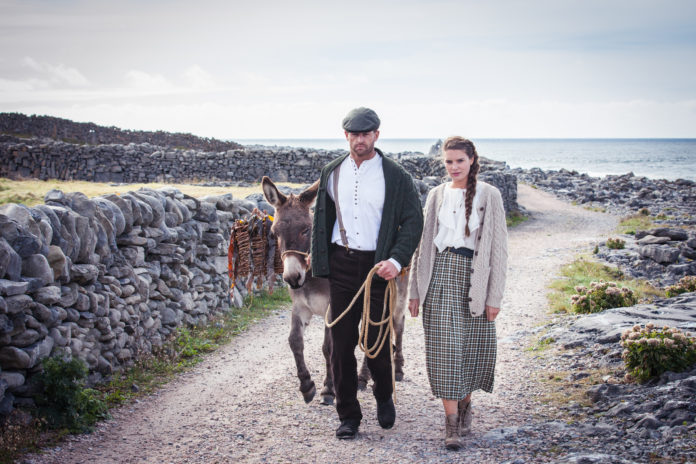On a small rocky island set in the mouth of Galway bay is a historical registry like no other. The registry of more than 500 entries comprises solely of patterns for a particular type of knitting stitches. Every entry is a different Aran knitting stitch created by the families of the islands more than a century ago.
Aran Clan Stitches
The pattern for each Aran stitch was once a secret known only to the clan who used it. The secret stitches were passed down to the next generation by technique and memory only. The youngsters of the island were taught many practical skills needed for life on the rugged Atlantic outcrop. Among those skills, they would have learned to wash, spin and knit wool to make clothes.
Every clan’s stitch was different and skillfully used to create sweaters for the men of the island. Even for the most experienced craftsperson, it would have taken weeks to complete a sweater. The stitches are complicated and intricate; used together, they create beautiful textured patterns.
The Creation of Aran Sweaters
Aran Sweaters were traditionally white, knitted by hand using wool from the sheep which grazed the island’s farmland. Over time, colors have been introduced—mainly dark blues at first. Then grays, greens, and nowadays nearly every color you can imagine.
Why each clan used a different patterned stitch is not completely clear. Some believe that the complex Aran stitches were used to identify fishermen if they were washed overboard. However, the general belief is that the patterns were just used to differentiate one clan from another.
Chunky Irish sweaters served a practical purpose for the inhabitants of the Aran Islands. For the islanders that went out to see or work the land, protection was essential. Ireland’s weather is changeable and unpredictable. Out in the islands and at sea, it can be fierce and unforgiving. Warm Aran sweaters served as practical protection against nature’s elements.
It was not only warmth that Aran sweaters offered but also some water resistance and sun protection. The islanders knew that the qualities of the wool that protected their sheep would work for them too. Better still, Aran wool naturally repels odor, perfect for hose working outdoors with livestock and fish.
How Aran Sweaters Became World Famous
In the early to mid-1900s, the popularity of Aran sweaters gradually grew. One Dublin businesswoman began to stock Aran Sweaters in the 1930s, but it was Grace Kelly that created a trend. On a 1950s cover page of Vogue magazine, actress Grace Kelly wore an Aran sweater while sailing. Demand for the Irish-made sweaters rocketed nearly overnight and saw Aran sweaters begin to be shipped worldwide.
What started as a practical solution for a local population has become a global phenomenon. Aran sweaters are loved and worn worldwide by the Irish diaspora, lovers of the outdoors, families, models, and film stars. The islands’ population has more than halved in the last century, but the legacy of Aran lives on.

















